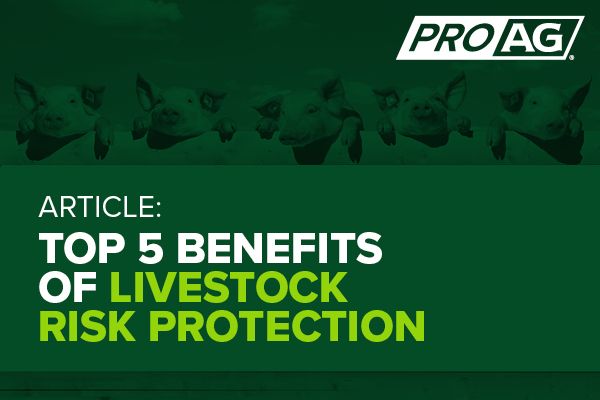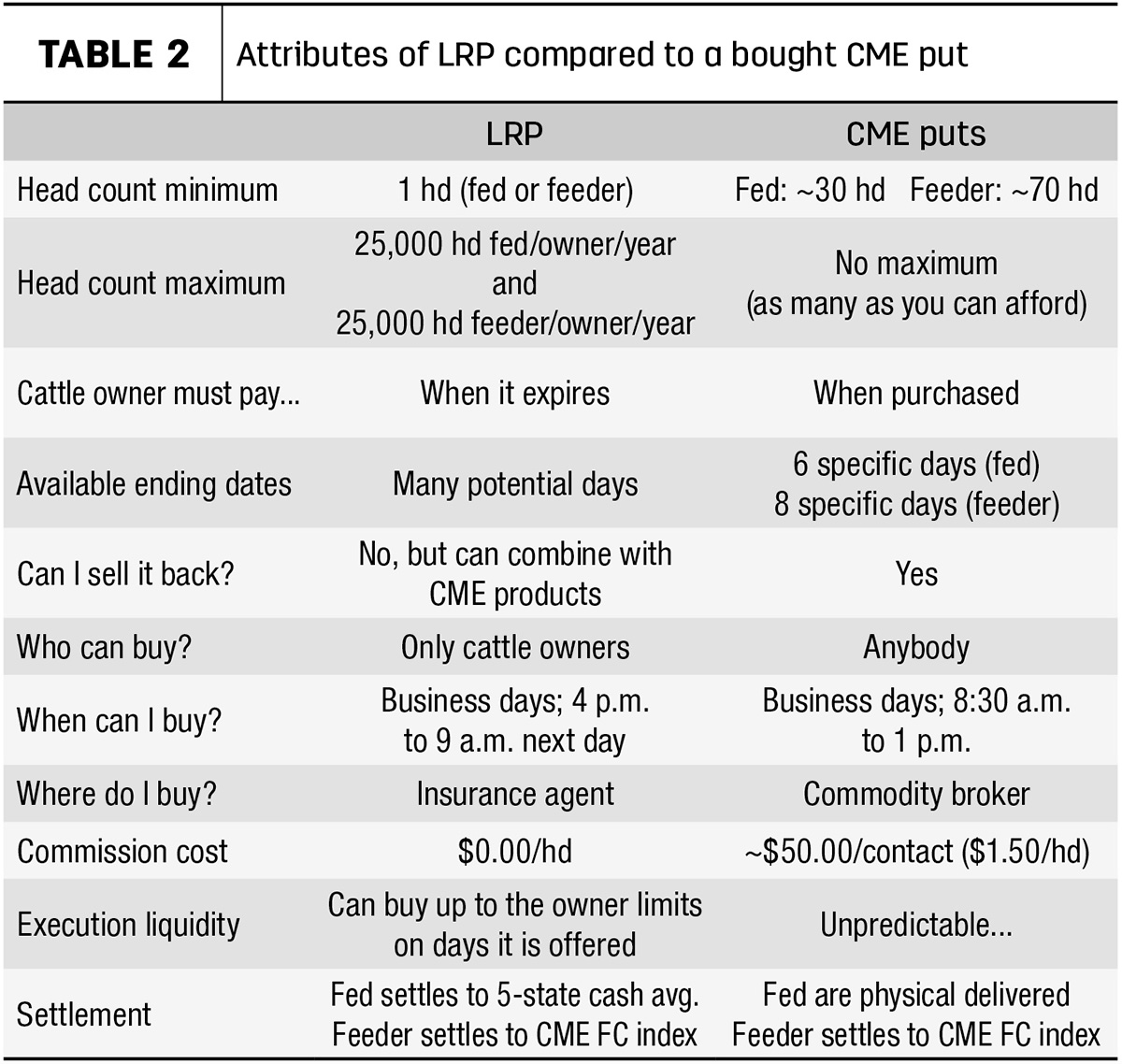Professional Guidance: Bagley Risk Management Methods
Wiki Article
Trick Factors to Take Into Consideration When Finding Animals Risk Defense (LRP) Insurance
When examining options for Livestock Threat Protection (LRP) insurance, numerous key factors necessitate careful factor to consider to ensure effective risk administration in the farming field. Choosing the ideal protection alternatives tailored to your certain animals operation is vital, as is comprehending exactly how exceptional costs associate with the level of security provided.Coverage Options
When considering Livestock Danger Security (LRP) insurance, it is vital to understand the various coverage alternatives available to alleviate threats in the farming field. Animals Danger Security (LRP) insurance coverage offers various protection options customized to satisfy the varied needs of livestock manufacturers. Bagley Risk Management. Among the primary insurance coverage options is cost protection, which safeguards against a decrease in market value. Manufacturers can pick the insurance coverage degree that lines up with their price risk management objectives, enabling them to guard their operations against potential economic losses.An additional essential coverage choice is the endorsement duration, which identifies the size of time the insurance coverage holds. Manufacturers can pick the recommendation period that finest matches their production cycle and market problems. Furthermore, insurance coverage degrees and rates differ based on the kind of animals being guaranteed, offering producers the flexibility to tailor their insurance coverage plans according to their specific demands.
Understanding the various coverage alternatives offered under Livestock Danger Security (LRP) insurance coverage is essential for producers to make enlightened decisions that successfully protect their animals operations from market unpredictabilities.
Premium Prices

Livestock Danger Security (LRP) insurance offers essential coverage choices customized to alleviate dangers in the farming sector, with a substantial aspect to consider being the estimation and framework of premium prices. When establishing premium expenses for LRP insurance policy, numerous elements come into play. These include the type and number of livestock being insured, the insurance coverage level picked, the existing market value, historic price data, and the length of the protection period. Insurance providers might additionally consider the place of the farm, as geographical elements can influence the total danger profile.
Insurance companies evaluate historic data on livestock prices and manufacturing costs to determine a proper premium that reflects the level of risk entailed. It is necessary for animals producers to carefully assess premium expenses and insurance coverage alternatives to guarantee they are effectively secured against potential economic losses due to negative market conditions or unforeseen occasions.
Eligible Animals
The resolution of qualified livestock for Animals Risk Security (LRP) insurance coverage includes mindful consideration of particular standards and attributes. Animals types that are usually qualified for LRP insurance policy include feeder cattle, fed swine, lambs, and cattle.Feeder cattle, for instance, are generally eligible for LRP coverage if they drop within defined weight arrays. Fed cattle might additionally be qualified, however they should meet particular weight and quality grade needs. Swine eligible for protection normally consist of market weight animals meant for slaughter. Lambs are an additional category of animals that can be thought about for LRP insurance coverage, with factors such as weight and age playing an essential duty in determining their eligibility.
Before choosing LRP insurance for animals, producers must very carefully assess the qualification criteria described by the insurance coverage provider to ensure their animals satisfy the essential needs for insurance coverage.
Plan Versatility
Policy versatility in Animals Danger Security (LRP) insurance permits manufacturers to customize coverage to match their specific requirements and take the chance of management techniques. This versatility equips livestock manufacturers to tailor their insurance plan based on elements such as the type of livestock they own, market conditions, and individual risk tolerance levels. One essential aspect of policy versatility in LRP insurance is the ability to select protection levels that align with the manufacturer's financial goals and take the chance of direct exposure. Producers can select protection levels that protect them against prospective losses because of changes in livestock prices, guaranteeing they are appropriately guaranteed without overpaying for unnecessary insurance coverage. In addition, LRP insurance policy provides flexibility in plan period, permitting producers to choose coverage durations that finest fit their production cycles and advertising and marketing timelines. By supplying personalized options, LRP insurance coverage allows manufacturers to successfully handle their threat direct view publisher site exposure while guarding their livestock procedures against unpredicted market volatility.Insurance Claims Refine
Upon experiencing a loss or damages, producers can start the insurance claims procedure for their Livestock Risk Protection (LRP) insurance by without delay contacting their insurance policy supplier. It is critical for manufacturers to report the loss immediately to speed up the claims process. When connecting to the insurance policy company, producers will certainly need to supply comprehensive information regarding the occurrence, including the date, nature of the loss, and any kind of pertinent documents such as vet documents or market prices.
After the evaluation is full, the insurance provider will decide concerning the insurance claim and communicate the outcome to the manufacturer. If the claim is authorized, the manufacturer will certainly receive compensation according to the terms of their Animals Risk Security (LRP) insurance coverage. Bagley Risk Management. It is necessary for producers to be knowledgeable about the claims process to ensure a smooth experience in case of a loss

Verdict
Finally, when picking Animals Risk Protection (LRP) insurance, it is important to take into consideration insurance coverage choices, premium costs, qualified animals, plan adaptability, and the insurance claims process. These essential variables will certainly help make certain that herdsmans and farmers are effectively shielded against possible dangers and losses related to their animals operations. Making an educated decision based upon these factors to consider can ultimately result in better economic protection and assurance for livestock manufacturers.Animals Threat Security (LRP) insurance coverage supplies various protection choices tailored to meet the diverse needs of livestock producers.The determination of qualified livestock for Livestock Risk Protection (LRP) insurance policy protection includes cautious consideration of details criteria and attributes.Plan flexibility in Animals Threat Security (LRP) insurance coverage enables producers to customize coverage to match their details needs and run the risk of administration approaches.Upon experiencing a loss or damage, producers can initiate the insurance claims process for their Animals Threat Security (LRP) insurance by immediately contacting their insurance coverage supplier.In conclusion, when More about the author picking Animals Risk Protection (LRP) insurance, it is important to consider coverage options, premium expenses, Learn More eligible livestock, policy versatility, and the insurance claims process.
Report this wiki page